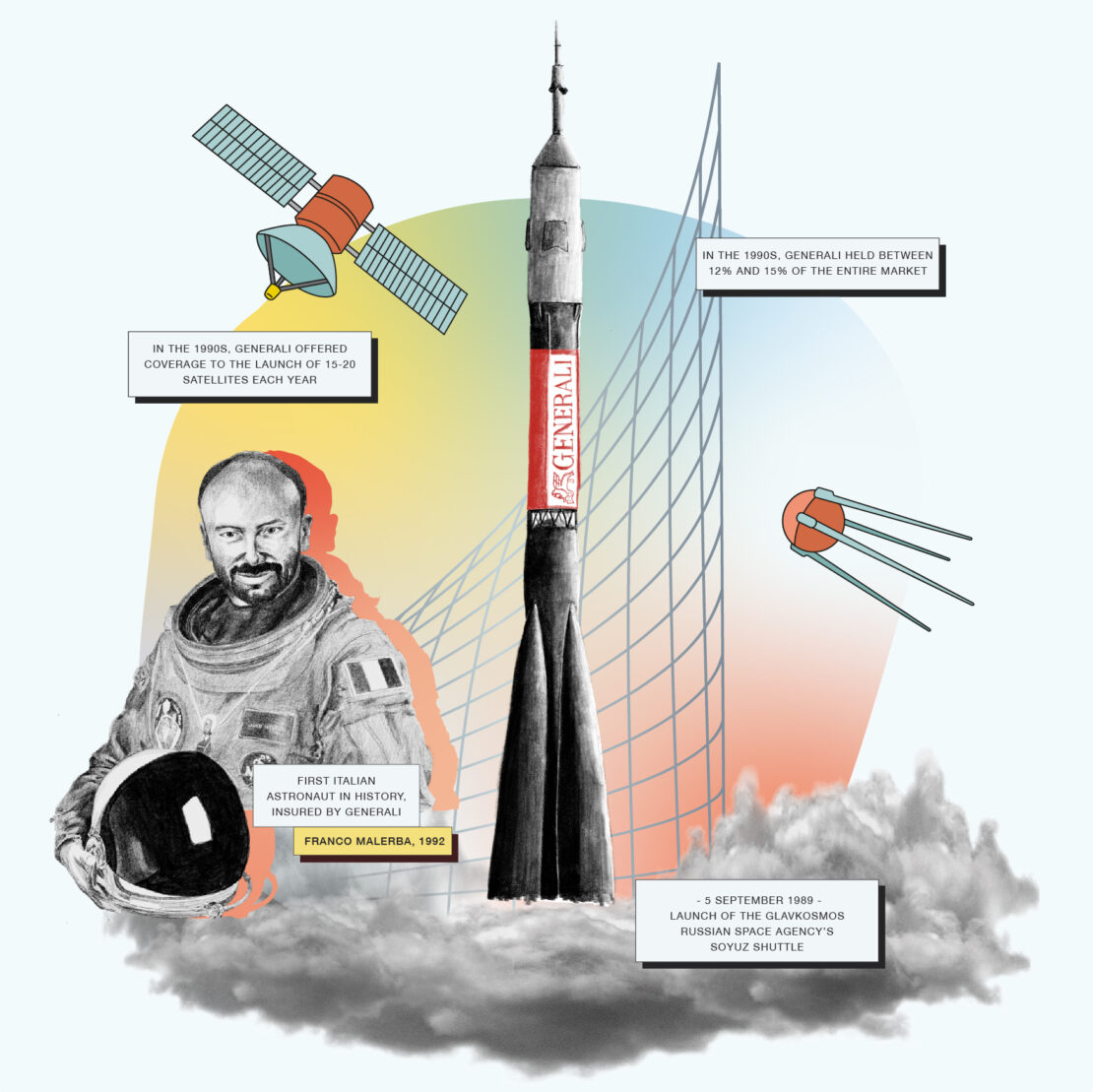1964 – Generali in Space: Leader in a Frontier Sector
A hundred years ago, the Generali group spread its wings to soar towards a new challenge. Around the mid-1920s, it was responsible for the first aeronautical covers. Sensitive to the issue of crossing boundaries, the company collaborated in groundbreaking pioneering explorations to the ends of the Earth.
In 1964, at the request of the National Research Council (CNR), it insured the “San Marco” project, conceived by Luigi Broglio, which made Italy one of the first nations to send a satellite into orbit after the Soviet Union and the United States.
In 1977, the European Space Agency (within what was then the European Community), to which Generali had been linked from the beginning, requested that the company cover the launch from Cape Canaveral of Sirio, the Italian telecommunications satellite able to transmit live TV in very high frequency bands on behalf of the satellite service company Telespazio.
Generali set out to be one of the leading companies in the sector. In 1978, just a year after the launch of Sirio, the space risks technical office was established within the aviation branch, and in 1991 it became an independent branch given the volume of business and the degree of competence achieved.
The Group showed a more than occasional interest in space risks. For Enrico Randone, chairman from 1979 to 1991, it was a precise operational choice, in tune with the corporate philosophy of a company moving in step with the times, confident in future progress. It was not only a technological challenge, but also a financial one, given the relentless swing of a market where high takings were followed by very heavy claims, holding the advantages and disadvantages in balance.
A fundamental factor in the company’s growth was the choice to always focus on a high level of technical training for the staff, who were not limited to taking risks, but became effective consultants to prevent them. In 1981, Generali was the first in the world to be equipped with a computerised database for the insurance assessment of future space programmes.
It promoted projects of considerable scientific value, exchange and comparison, organising international conferences to share knowledge with other insurers, government agencies, and space industry experts. At the turn of the decade, as the Cold War started to thaw, it also worked with China and the Soviet Union. Generali’s envoys were among the first Westerners to visit the Soviet cosmodrome of Baikonur and they cooperated so brilliantly with the Glavkosmos space agency that, at the launch on the 5th of September 1989, the Soyuz shuttle bore the emblem of the winged lion .
During those years, the aviation branch recorded significant increases in production. The trend of the premiums increased from almost two billion lire in 1979 to more than 12 billion in 1985. Subsequently, the sector went into a slump, but its recovery was so vigorous that by 1988, premium income already reached 18 billion, double the previous year’s. In 1989, Generali was the leader for collection of premiums in the space sector, with 20% of the world total. In the 1990s, it held between 12% and 15% of the entire market and covered the launch of 15-20 satellites each year, compared to the two launches insured in 1965. In 1992, the volume of premiums reached 60 billion lire, crowning a constant growth.
In that year, Generali insured Franco Malerba, the first Italian astronaut in history, who took part in the 1992 STS-46 space mission aboard the Atlantis space shuttle. We can imagine the lion in orbit next to the shuttle, on the wings of dreams and progress to conquer the last frontier.

